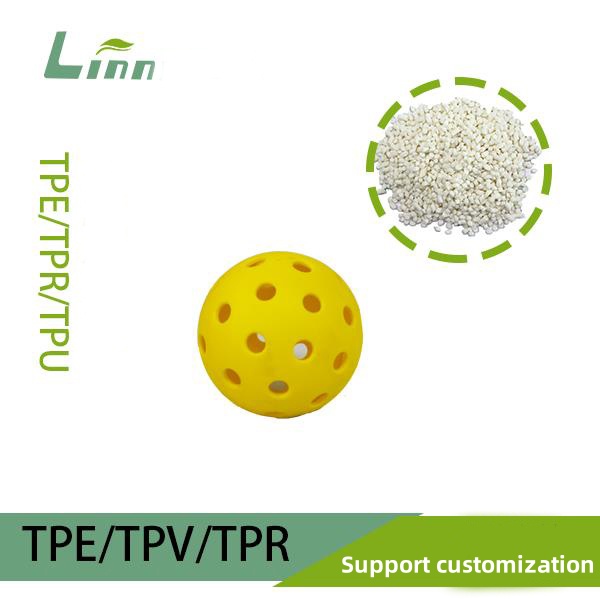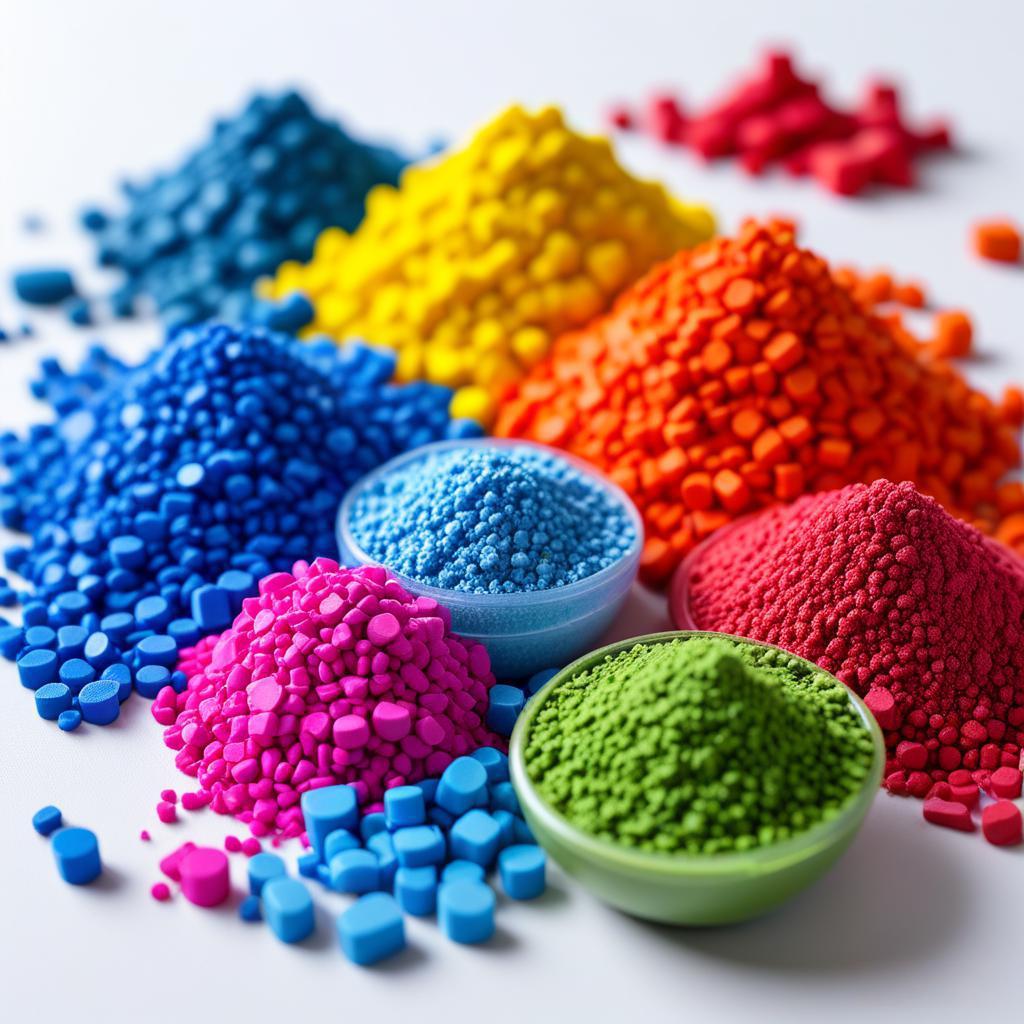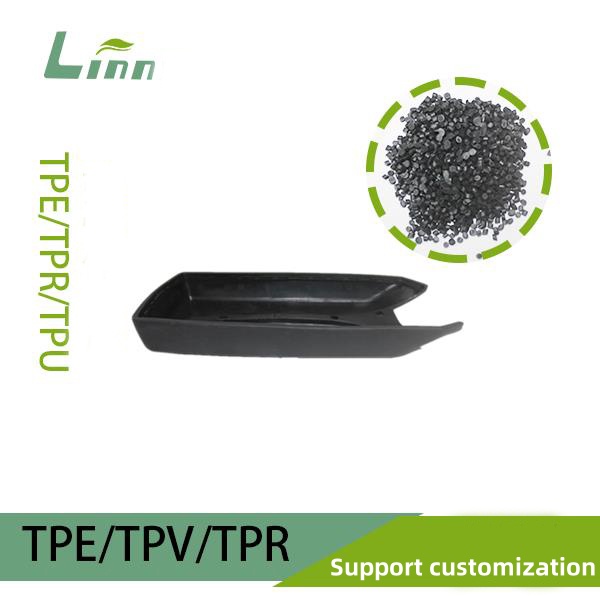As someone who’s spent years navigating the ins and outs of thermoplastic elastomers (TPEs) in manufacturing, I’ve encountered just about every quirk these versatile materials can throw at you. One issue that keeps popping up, whether in client meetings or late-night factory troubleshooting sessions, is this: Why does TPE develop a strong odor after being stored for a long time, and how can we fix it? That lingering smell isn’t just unpleasant—it can raise concerns about product quality, safety, and compliance. In this article, I’m diving deep into the causes of TPE odors, sharing practical solutions I’ve tested in the field, and offering tips to prevent the issue altogether. My aim is to equip you with clear, actionable steps to banish that smell and keep your products pristine.

Why Does TPE Smell Bad After Storage?
TPEs are a go-to material for everything from soft-touch grips to medical devices, thanks to their blend of rubber-like flexibility and plastic-like processability. But when they start to smell—especially after sitting in a warehouse for months—it’s not just a minor annoyance. The odor can signal material degradation, affect user experience, or even violate regulations in sensitive applications like food contact or medical devices.
The smell typically comes from volatile organic compounds (VOCs) released by the TPE. These compounds can originate from the material’s formulation, processing conditions, or environmental factors during storage. Let’s unpack the root causes and then move on to solutions that I’ve seen work in real-world scenarios.
1. Root Causes of TPE Odor After Long-Term Storage
Drawing from my experience troubleshooting TPE issues, here are the main reasons why TPE develops a strong odor over time:
1.1 Volatile Additives in the Formulation
TPE formulations often include plasticizers (e.g., mineral oils), stabilizers, flame retardants, or processing aids. Some of these additives are volatile, meaning they can slowly evaporate, releasing VOCs that cause odors.
Why it happens: Low molecular weight additives, like certain plasticizers, are prone to migrating to the surface and evaporating, especially in warm or humid conditions.
Signs: The odor is often chemical-like or oily, and the surface may feel slightly tacky.

1.2 Degradation of Material Components
Over time, TPE components can break down due to oxidation, thermal degradation, or UV exposure, releasing VOCs as byproducts. This is more common in TPEs with poor stabilization or those stored improperly.
Why it happens: Exposure to heat, oxygen, or light triggers chemical reactions in the polymer or additives, producing smelly compounds like aldehydes or ketones.
Signs: The odor may be rancid or burnt, and the material might show discoloration or brittleness.
1.3 Residual Monomers or Solvents
During TPE production, trace amounts of unreacted monomers, solvents, or byproducts from polymerization can remain in the material. These residuals can volatilize over time, contributing to odors.
Why it happens: Incomplete polymerization or inadequate degassing during compounding leaves behind volatile residues.
Signs: The smell is sharp or solvent-like, often noticeable soon after production.
1.4 Environmental Factors During Storage
Storage conditions play a huge role in TPE odor development. High temperatures, humidity, or poor ventilation can accelerate VOC release or promote microbial growth on the surface, adding to the smell.
Why it happens: Heat speeds up additive migration, while humidity can interact with surface residues to create musty odors.
Signs: The odor worsens in warm, humid warehouses or sealed packaging.

1.5 Contamination from Processing
Improper processing, such as overheating during extrusion or injection molding, can degrade TPE components, leaving behind odorous byproducts. Contamination from mold release agents, lubricants, or dirty equipment can also contribute.
Why it happens: Thermal stress or foreign substances introduce volatile compounds that linger in the material.
Signs: The odor is localized to certain batches and may be accompanied by surface defects.
2. Solutions to Reduce TPE Odors
Tackling TPE odor requires a multi-pronged approach, from reformulating the material to optimizing storage and processing. Below, I’ve outlined solutions that have worked for me and my clients, categorized by stage of intervention.
2.1 Optimize the TPE Formulation
Use Low-Odor Additives
Switching to low-VOC or high molecular weight additives can significantly reduce odors. For example, replacing low-viscosity mineral oils with higher-viscosity plasticizers minimizes migration and volatilization.
How to do it: Work with your supplier to select non-volatile plasticizers or odor-neutral stabilizers. Request VOC emission data to compare options.
Pro tip: Additives like zinc oxide or calcium carbonate can act as odor absorbers, reducing VOC release.
Incorporate Odor Neutralizers
Specialized odor-neutralizing additives, such as activated carbon, zeolites, or molecular sieves, can trap VOCs within the TPE matrix, preventing their release.
How to do it: Add 0.5-2% neutralizers during compounding. Test for compatibility to avoid affecting mechanical properties.
Pro tip: Zeolites are particularly effective for TPEs used in medical or food-contact applications.
Enhance Material Stabilization
Adding antioxidants or UV stabilizers can prevent degradation-related odors by protecting the TPE from oxidation and light exposure.
How to do it: Use hindered phenols or phosphites as antioxidants, typically at 0.1-0.5%. Consult your supplier for recommendations.
Pro tip: Conduct accelerated aging tests (e.g., 70°C for 168 hours) to verify long-term stability.

2.2 Improve Processing Conditions
Lower Processing Temperatures
High temperatures during extrusion or injection molding can degrade additives or the polymer, creating odorous byproducts. Reducing barrel and mold temperatures by 10-20°C can help.
How to do it: For SEBS-based TPEs, aim for barrel temperatures of 160-190°C and mold temperatures of 30-50°C. Adjust gradually to maintain quality.
Pro tip: Use a pyrometer to ensure consistent temperature across all zones.
Enhance Degassing
During compounding, vacuum degassing removes residual monomers, solvents, and VOCs, reducing odor potential.
How to do it: Install a vacuum vent on the extruder and maintain a pressure of <100 mbar. Increase degassing time for high-VOC formulations.
Pro tip: Test degassed samples with a gas chromatograph to confirm VOC reduction.
Clean Equipment Thoroughly
Contamination from mold release agents, lubricants, or previous material runs can introduce odors. Clean molds and extruders before processing TPE.
How to do it: Use a purging compound or mild solvent compatible with TPE. Avoid silicone-based agents, as they can leave odorous residues.
Pro tip: Schedule regular equipment maintenance to prevent contamination buildup.

2.3 Optimize Storage Conditions
Control Temperature and Humidity
Store TPE pellets and finished products in a cool, dry environment (below 25°C, <50% humidity) to slow VOC release and prevent microbial growth.
How to do it: Use climate-controlled warehouses or dehumidifiers. Avoid stacking products tightly to ensure ventilation.
Pro tip: Monitor storage conditions with a hygrometer to maintain consistency.
Use Breathable Packaging
Sealed plastic bags or containers can trap VOCs, intensifying odors. Breathable packaging, like perforated bags or cardboard boxes, allows VOCs to dissipate.
How to do it: Package TPE products loosely and avoid airtight seals for long-term storage.
Pro tip: Add desiccant packs to absorb moisture and reduce musty odors.
Post-Production Ventilation
After production, ventilate products in a well-aired space for 24-48 hours before packaging to allow VOCs to off-gas naturally.
How to do it: Place products on racks in a ventilated area with fans to promote air circulation.
Pro tip: Use an odor meter to measure VOC levels before and after ventilation.
2.4 Post-Processing Treatments
Heat Treatment
A controlled heat treatment (e.g., 50-70°C for 12-24 hours) can accelerate VOC release, reducing odors in finished products.
How to do it: Place products in a ventilated oven or chamber. Monitor temperature to avoid deformation.
Pro tip: Test a small batch first to ensure heat doesn’t affect appearance or performance.

Surface Coating
Applying a low-VOC coating, such as a water-based polyurethane, can seal the TPE surface, preventing VOCs from escaping.
How to do it: Use spray or dip-coating after surface preparation (e.g., plasma treatment for adhesion). Ensure compliance with regulations like RoHS RoHS Directive.
Pro tip: Test coating durability under expected use conditions.
3. Preventing Odors: Proactive Steps
Prevention is the best strategy for managing TPE odors. Here’s how to stay ahead of the issue:
Collaborate with suppliers: Specify low-odor requirements and request TPE grades with minimal VOC content. Ask for emission test reports per standards like VDA 278 VDA 278 Standard.
Test early and often: Conduct VOC emission tests and accelerated aging (e.g., 80°C, 80% humidity for 168 hours) to predict odor behavior.
Optimize storage: Invest in climate-controlled storage to maintain stable conditions year-round.
Document processes: Keep detailed records of successful formulations and processing parameters to ensure consistency.
Comparison of Odor Reduction Methods
To help you choose the best approach, here’s a table comparing the solutions:
| Method | Advantages | Disadvantages | Best For | Cost |
|---|---|---|---|---|
| Low-Odor Additives | Effective, long-term solution | Higher cost, requires supplier support | Formulation stage | Medium |
| Odor Neutralizers | Quick, minimal impact on properties | Adds cost, needs compatibility testing | Most TPE grades | Medium |
| Enhanced Stabilization | Prevents degradation, improves durability | May increase formulation complexity | Long-term storage | Medium |
| Lower Processing Temps | Simple, no material changes | Limited effect, may slow production | Process optimization | Low |
| Vacuum Degassing | Removes VOCs effectively | Requires equipment upgrade | Compounding | High |
| Climate-Controlled Storage | Prevents odor buildup, easy to implement | Ongoing operational cost | Storage | Medium |
| Heat Treatment | Fast, works on finished products | Risk of deformation, needs testing | Post-processing | Medium |
| Surface Coating | Seals odors, enhances durability | Adds process step, environmental concerns | Finished products | Medium |
Case Study: Tackling Odor in TPE Medical Tubing
A few years back, I consulted for a manufacturer of TPE medical tubing. After six months in storage, the tubing developed a sharp, chemical-like odor, raising concerns about patient safety. Here’s how we resolved it:
Formulation Adjustment: The original TPE used a low-viscosity plasticizer. We switched to a high molecular weight plasticizer and added 1% zeolite as an odor neutralizer. VOC tests showed a 60% reduction in emissions.
Processing Fix: We reduced extrusion temperatures from 210°C to 190°C and added a vacuum degassing step, further lowering residual VOCs.
Storage Upgrade: We recommended storing the tubing in a ventilated, climate-controlled warehouse (20°C, 40% humidity) with breathable packaging.
The result was odor-free tubing that met stringent medical standards. This project underscored the importance of addressing odor at every stage—from formulation to storage.

Common Pitfalls to Avoid
Here are mistakes I’ve seen (and learned from) when dealing with TPE odors:
Assuming odors are harmless: Strong smells can indicate VOCs that violate regulations, especially in medical or food-contact applications. Always test for compliance.
Skipping pre-production testing: Small formulation changes can impact odor. Conduct VOC emission tests before scaling up.
Neglecting storage conditions: Even low-odor TPEs can smell if stored poorly. Invest in proper warehousing.
Over-relying on post-processing: Coatings or heat treatments are bandaids. Fix the root cause for lasting results.
FAQs: Your Questions Answered
To round things out, here are answers to common questions about TPE odors:
Q1: Can TPE odors be harmful?
A: Most TPE odors are from benign VOCs, but in sensitive applications (e.g., medical), they may pose risks. Test for compliance with standards like ISO 10993 for biocompatibility ISO 10993 Standard.
Q2: How long does it take for odors to dissipate naturally?
A: It depends on the TPE and storage conditions. Ventilation for 24-48 hours can help, but persistent odors require formulation or processing fixes.
Q3: Are some TPE types less prone to odors?
A: TPU-based TPEs and high-stability SEBS grades tend to have lower VOC emissions than soft, oil-heavy SEBS formulations.
Q4: Can cleaning remove odors?
A: Surface cleaning (e.g., with alcohol) may reduce odors temporarily, but VOCs will re-emerge unless the root cause is addressed.
Closing Thoughts
Dealing with strong odors from TPE after long-term storage can feel like chasing a ghost, but with the right strategies, it’s a solvable problem. From tweaking formulations to optimizing storage, every step counts in creating odor-free products that meet your quality standards. My years in the industry have taught me that patience, testing, and collaboration with suppliers are the keys to success. I hope this guide gives you the tools to tackle TPE odors with confidence. If you’re stuck or need more advice, I’m just a message away—let’s solve this together!




